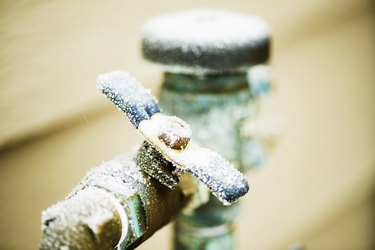Here underneath you might get a good deal of good quality insights involving Prevent Frozen Pipes .

Cold weather can damage your pipes, especially by freezing pipelines. Below's exactly how to stop it from taking place and what to do if it does.
Introduction
As temperature levels decline, the threat of icy pipelines boosts, potentially bring about expensive fixings and water damage. Recognizing exactly how to prevent frozen pipes is important for house owners in chilly climates.
Prevention Tips
Shielding at risk pipes
Wrap pipelines in insulation sleeves or utilize heat tape to protect them from freezing temperature levels. Focus on pipelines in unheated or outside areas of the home.
Home heating techniques
Maintain interior areas sufficiently warmed, particularly locations with plumbing. Open up closet doors to enable cozy air to circulate around pipes under sinks.
Just how to identify frozen pipelines
Look for decreased water circulation from taps, uncommon odors or noises from pipelines, and noticeable frost on exposed pipes.
Long-Term Solutions
Structural modifications
Take into consideration rerouting pipelines away from exterior walls or unheated areas. Include added insulation to attics, cellars, and crawl spaces.
Updating insulation
Purchase premium insulation for pipelines, attic rooms, and walls. Correct insulation helps maintain consistent temperatures and decreases the risk of icy pipes.
Safeguarding Outdoor Pipes
Garden hoses and exterior faucets
Disconnect and drain pipes garden tubes before winter. Set up frost-proof faucets or cover outside taps with protected caps.
Recognizing Frozen Pipelines
What creates pipes to ice up?
Pipes freeze when subjected to temperature levels below 32 ° F (0 ° C) for prolonged durations. As water inside the pipes ices up, it broadens, taxing the pipe wall surfaces and possibly causing them to burst.
Threats and damages
Frozen pipelines can bring about water supply disruptions, property damage, and pricey repair work. Ruptured pipes can flooding homes and cause considerable architectural damages.
Signs of Frozen Pipes
Identifying icy pipes early can stop them from rupturing.
What to Do If Your Pipes Freeze
Immediate activities to take
If you think frozen pipes, keep taps open to relieve pressure as the ice thaws. Utilize a hairdryer or towels soaked in hot water to thaw pipelines gradually.
Conclusion
Preventing icy pipes calls for positive steps and fast reactions. By recognizing the causes, indicators, and preventive measures, homeowners can shield their plumbing throughout winter.
5 Ways to Prevent Frozen Pipes
Drain Outdoor Faucets and Disconnect Hoses
First, close the shut-off valve that controls the flow of water in the pipe to your outdoor faucet. Then, head outside to disconnect and drain your hose and open the outdoor faucet to allow the water to completely drain out of the line. Turn off the faucet when done. Finally, head back to the shut-off valve and drain the remaining water inside the pipe into a bucket or container. Additionally, if you have a home irrigation system, you should consider hiring an expert to clear the system of water each year.
Insulate Pipes
One of the best and most cost-effective methods for preventing frozen water pipes is to wrap your pipes with insulation. This is especially important for areas in your home that aren’t exposed to heat, such as an attic. We suggest using foam sleeves, which can typically be found at your local hardware store.
Keep Heat Running at 65
Your pipes are located inside your walls, and the temperature there is much colder than the rest of the house. To prevent your pipes from freezing, The Insurance Information Institute suggests that you keep your home heated to at least 65 degrees, even when traveling. You may want to invest in smart devices that can keep an eye on the temperature in your home while you’re away.
Leave Water Dripping
Moving water — even a small trickle — can prevent ice from forming inside your pipes. When freezing temps are imminent, start a drip of water from all faucets that serve exposed pipes. Leaving a few faucets running will also help relieve pressure inside the pipes and help prevent a rupture if the water inside freezes.
Open Cupboard Doors
Warm your kitchen and bathroom pipes by opening cupboards and vanities. You should also leave your interior doors ajar to help warm air circulate evenly throughout your home.

As a serious person who reads on Helpful Tips to Prevent Frozen Pipes this Winter, I think sharing that editorial was mandatory. Do you know somebody who is intrigued by Helpful Tips to Prevent Frozen Pipes this Winter? Be sure share it. Thanks for your time. Come back soon.
Schedule An Appointment
Comments on “Tips to Avoid Frozen Plumbing in Winter: Pro Tips”